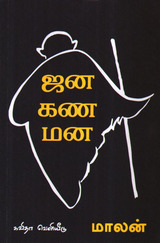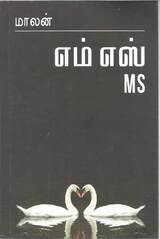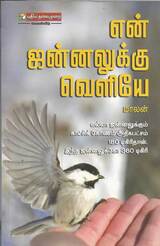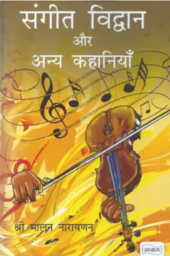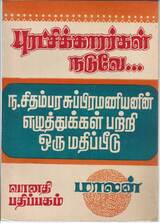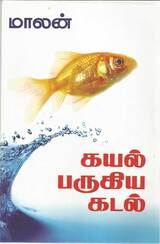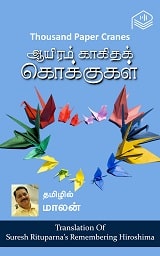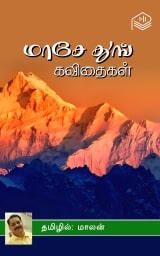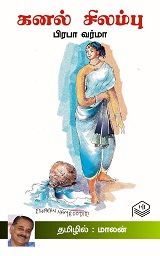Asian College of Journalism Chennai
Sept 3 2005
Socio Economic Fall out of Tsunami
Maalan
|
W |
ith a death toll of about 350 thousand, the Indian Ocean tsunami occurred on 26 December 2004 is by far the worst natural disaster of that kind in the recoded human history. In the five previous deadliest tsunamis, the death toll is comparatively lesser:
:
Portugal: 1 November 1755 30,000
Japan: 21 May 1792 14,000
Indonesia: 27 August 1883 36,000
Japan 15 June 1896 27,000
Japan 27 March 1933 3,000
Quite apart from the sheer number of deaths, the Indian Ocean tsunami has at least two unique features
First, it is the world’s first truly global disaster, with lives shattered in a dozen of countries in two different continents.
Second, the response to the disaster has also been global in a way rarely seen before, with tens of millions of ordinary citizens reaching into their pockets to send aid, in addition to donor governments and agencies. In some donor nations such as the UK, USA, Italy and Germany private donations surpassed the sizable government aid commitments and for the first time corporate donors figured prominently among private donors.
The first feature, the vast geographic spread of the disaster, produced a huge logistic challenge for international organizations and aid agencies. It also rekindled international interest is in setting up a global disaster monitoring system and other cooperative initiatives
The second feature, massive tsunami aid flows, has drawn attention to a number of new issues of international aid operations, including avoiding duplication of tasks, setting up procedures for translating aid pledges into actual aid flows and finding ways and means of avoiding untoward effects of massive aid inflows in an unplanned fashion to the affected countries. The unprecedented preference shown by individual donors to non governmental agencies than country governments throws a hint on the declining level of confidence reposed on them.
The response of the public was overwhelming and it was partly because of the extensive media coverage the tragedy has received. The reader / viewer’s mind was filled with the images of distress and tragedy and with stories that evoke sympathy which forced the common man to open his heart and wallet. For a month or so media, particularly the new media like web sites and blogs were showering endless amounts of information and pleas for help. But then slowly coverage started dwindling as we have to catch up with other stories that are equally compelling and important.
Tsunami is an opportunity for us to discuss not just death toll and devastation but to look beyond. The devastation caused by the tsunami has begun to reveal a close connection between the magnitude of the damage caused by the killer waves and the violation of environmental regulations in the affected countries. Although the height of the waves and their global spread were purely the work of nature, there is clear evidence that the sheer number of losses of human lives was partly a result of modern progress, ruthless destruction of natural defenses such as coral forests and mangrove swamps, and building oceanfront hotels and villas in violation of coastal conservation legislation.
For me this is an opportunity to assess the strengths and weaknesses of our system; a chance to appraise the efficiency of the bureaucracy; an occasion to evaluate the shocks our growing economy can endure; a prospect to study the nature of our social fabric.
The macroeconomic impact of the tsunami appears to be limited, despite the unprecedented scale of loss of human life. It may look strange, but for the financial world, SARS struck much harder and longer than tsunami. The Financial havoc caused by the little virus is stronger than the one caused by mighty tidal waves. The main reason for the limited economic impact was that the tsunami missed the industrial and commercial centers of all affected countries other than Maldives.
True, Asian shares and currencies fall a day after a tsunami. But natural disasters often provoke sharp stock market declines usually followed by recoveries that are almost as intense. The stock markets in the region have generally not been impacted by the disaster and, in fact, have behaved differently than expected. Markets in Indonesia and India ended the trading week after the tsunami more than 1 percent higher, while the Thai and Malaysian markets were little changed. Sri Lanka’s market fell sharply immediately after the disaster, and then got most of the lost ground back later, ending the week down about 4 percent., Surprisingly, stock markets have continued to rally this year. It may seem perverse when juxtaposed with the immense loss of life, but analysts say, the disaster may even produce economic and commercial benefits as rebuilding begins.
In fact the exchange rate of the Sri Lanka Rupee (SLR) began to appreciate as aid commitments began to mount. The SKL/US$ rate stood at 105 on 20 December 2004 In the late February it has lightly recovered and remained in the narrow range of 99.3 to 99.7. But this was a temporary phenomenon and now it has retuned back to 101 as the reconstruction process has began.
By virtue of its economic sizes, the immediate and medium-term impact on economic growth is proportionately much less in India than in Sri Lanka and Maldives. The Central Bank of Sri Lanka is predicting that GDP growth will drop from a predicted 6 percent to around 5.5 percent in 2005. But the IMF has cut their growth forecast for 2005 by a greater magnitude, from 5 percent to 4 percent. The indications are that adverse economic impact of the disaster will result in a significant increase in the incidence of poverty. The Asian Development Bank has predicted that the tsunami’s immediate and lingering effects would throw some 250,000 people below the poverty line in Sri Lanka This implies an increase in the overall head-count rate of poverty in Sri Lanka from the present level of 22.7 percent (World Bank 2004) to 25 percent.
In the case of India its economy is much stronger to take shock. Three years of strong growth, improved fiscal position and the high external reserves have helped India to weather the losses. Government of India has estimated the damages to be around 1.2 billion dollars. But the calculations of the Citigroup, places the damages to be around 6 billion, far high from the official estimate. But even on that scale, the decline in the GDP would be only around 0.4 percent. India’s growth rate in 2004 was 6.4%. On a pragmatic view, for the 2005 it may end up between 6-6.5 %, though government is optimistic about a higher growth rate due to good monsoon.
Unlike Sri Lanka and Maldives, India’s dependence on the notoriously fickle travel and tourism industry, is marginal. Travel and tourism represents both directly and indirectly 74.1 percent of the GDP of the Maldives and 10.8 percent of Sri Lanka, according to figures from the World Travel and Tourism Council. For India it is only
4.9 percent.
It was feared that marine exports may have to face the brunt. But t according to the Marine Products Export Development Authority, the impact of the tsunami on the seafood industry has not been very significant. In the Rs 6,200-crore marine export sector only 15 and 20 per cent of the total catch is from the sea.
But in my opinion, the loss has to be viewed from the point of employment and not in terms of money or export. In India fishing provides employment for 250 days on an average, in a year. With the enormity of the disaster, fishing activities in large parts of the country came to stand still for at least 3 weeks to 2months. In severely affected areas where the fishing boats and nets have been totally destroyed, fishing activity paralyzed for several months, until the boats and nets were replaced. The misery of the poorer fishermen was compounded as their active fishing days are reduced and as they were forced out of their traditional occupation until they get their nets, fishing gear and boats back in operation
Another area of concern is job creation. The International Labor Organization (ILO) estimated that the tsunami destroyed some one million jobs in Indonesia and Sri Lanka alone. In Thailand, the government fears some 200,000 jobs in the tourism sector may have been lost. The ILO expects that the unemployment rate in the Indonesian provinces directly affected by the disaster could rise to as high as 30 percent, up from about 7 percent, and in the affected parts of Sri Lanka to more than 20 percent, up from about 9 percent. The Asian Development Bank estimates that as many as two million fishermen and subsistence farmers may have lost their entire livelihoods–possibly increasing the level of poverty in absolute.
The Christian Century, a Christianity journal from US, described Tsunami as a great leveler as it brought closer the Buddhist organizations seeking to criminally punish religious conversions and evangelical Christians during the relief operations. Tsunami might had been a great leveler among religious groups, but it is not the case when it comes to gender.
Oxfam, a development, advocacy and relief agency, in one of its reports says tsunami had hit the woman hardest. It appears that women might have been killed by the waves in greater numbers than men. Figures collated by Oxfam show that the tsunami killed more women than men in the worst affected districts. In Nagapattinam, the worst affected district of Tamil Nadu in South India, government statistics state that 2,406 women died, compared with 1,883 men. In Cuddalore, the second most affected district, almost three times as many women were killed than men, with 391 female casualties, compared with 146 men. In Devanampattinam village in Cuddalore, for example, 42 women died compared with 21 men. In Pachaankuppam village, the only people to die were women.
In its survey local survivors cite various reasons why this may be so. When the tsunami hit, many men were fishing at sea while the women were waiting near the shoreline for the boats to come in with the catch, which they would collect, clean, and then take to the market to sell. The tsunami traveled relatively calmly out at sea, passing under the boats, but swelled up as it reached the shore. Many women also lost their lives in their attempts to save their children and elderly relatives who were with them at the time. In some villages many women died because they stayed behind to look for their children and other relatives; men more often than women can swim; men more often than women can climb trees.
It should be media’s concern to understand and discuss the consequences of this demographic changes. Some of the questions to be addressed are : Will widows in India have access to land once owned by their husbands? Will younger women enter into marriages with much older men, as already seems to be happening in some locations? And will this carry risks in terms of compromising their education and reproductive health? In the fishing communities of South India, what rights will surviving women enjoy under new arrangements and programmes? In whose names will newly built houses be registered? Will men take on new domestic roles, or will women’s workloads increase?
The structure of families has also undergone a change. In some homes, traditional gender roles are being challenged, as men deal with the crisis by taking on the responsibilities of single parenting and learning to perform new roles.
However, Valli, from Pudukuppam village in Cuddalore now looks after the two young daughters of her brother, Palaniappan. Palaniappan, 26, committed suicide after he found he could not cope with the children and a life without a job, after his wife was washed away by the tsunami.
Another marginalized section of the society, Dalits allege discrimination in relief and rehabilitation and have mooted a plan to approach courts. At a daylong public hearing organised at Chennai on August 22 Dalits from the 13 affected districts alleged they had been left out of most of the relief works executed by the Government and non-governmental organisations. The Hindu reports that they emotionally recounted the discrimination they faced for the past eight months, as a seven-member jury listened sympathetically.
The jury included retired Madras High Court judges Sami Durai and B. Akbar Basha Khadiri, C. Chellappan, former member, National SC/ST Commission, Vasanthi Devi, former chairperson, State Commission for Women, Annie Raja, general secretary, National Federation of Indian Women, Shabnam Hashmi, human rights
activist, New Delhi, and Prof..AMarx.
Rani of Muttukadu in Villupuram district said 150-odd Dalit families had received no relief except a small package containing saris, soaps and food that was unfit for consumption. All the Government had to do to restore livelihood to the men in the village was to give them two catamarans and two nets, but this had not been done. Women should be given training in other trades.
Malini, from Sirgazhi in Nagapattinam district, said the 15 Dalit families in their village had to pay Rs.1,000 a family to fishermen leaders who told them that unless they paid up, the entire relief package would not reach them. Dhanavel of Kottaimedu, Cheyyar, said only 11 families who had lost their catamarans and nets were paid Rs. 10,000, though many more had been affected. They charged that fishermen in the affected areas had cornered all the relief, in collusion with the authorities, and the Dalits whose livelihood also depended on the sea were left out of every scheme.
The conduct of certain officials in distributing relief sans common sense. BBC news website has reported that one Nicobarese tribeswoman was paid two rupees as a relief and that too by cheque! After the low compensation was reported on the BBC News website, some victims were offered more money but many refused in anger.
Nicobarese Tribal Association has said that the government should have given them tools and timber from their forests and they could have constructed their houses in their traditional style by now. BBC news site has quoted Rashid Yusuf of the Nicobarese Tribal Association, who says "I don’t understand why they needed to construct intermediate shelters.”
In Sri Lanka, the need for shelter is overwhelming, but so far across the country only around half of the temporary homes are up and only a few thousand of the 90,000 permanent homes needed have even begun construction. For example in the Galle district construction has started for about 200 houses, but 6,000 are needed. Various agencies blame red tape for the delay.
In Malaysia, even after six months, some victims complain that they are yet to get the relief. Even for those who have received the relief, it is far below the promise. The government promised $6,500 for those who lost fiberglass boats, and $18,000 for those who lost wooden ones. "But it appears only $250 for fiberglass boats, and $800 for wooden boats, have reached the victims. The rest of the money appears to have simply disappeared into a black hole, thanks to the middle men. One media executive has told BBC One media executive told the BBC: "We know full well that when we took along gifts donated by viewers and readers to the villages, very often they went no further than the headman. But what can you do?"
The tsunami clearly brought out the best in millions of people, but it also brought out the worst in a few. Now it is for the media to confront the issue.
ACJ : September 3, 2005 11:20:16 AM






